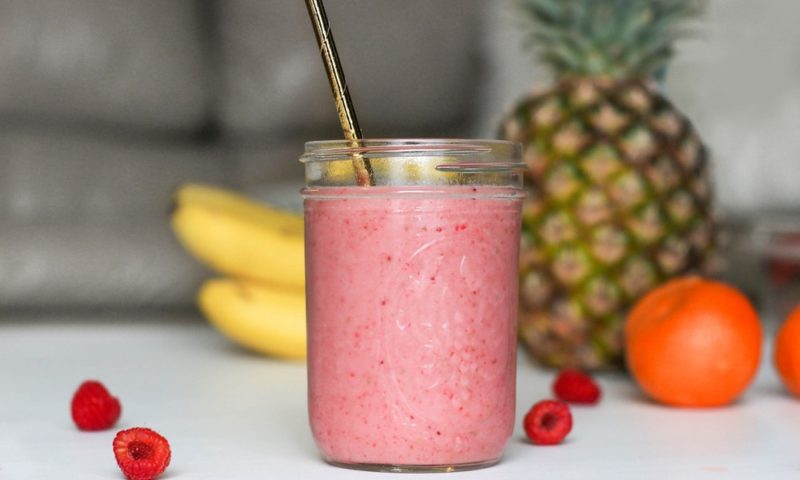The sun is shining bright and temperatures are climbing. Summer is around the corner! As the heat rolls in and you’re looking for fun ways to stay refreshed, what comes to mind? A creamy ice cream cone? A glass of lemonade? What about a summer smoothie?
The ‘Healthy Smoothie’ Myth
Smoothies are a timeless favorite for many reasons — creamy textures, rich fruity flavors and chilling temperatures, just to name a few. However, many people also cherish smoothies because they’re convenient and have the reputation of being nutritionally sound. A bunch of fruit mixed together is full of nutrients to support your health goals, right?
What many people don’t realize is how high the sugar and calorie content is for most smoothies. In fact, a large fruit smoothie from a typical smoothie retailer like Jamba Juice could have around 900 – 1000 calories give or take — the same as a blended frozen drink topped with whipped cream and chocolate chips at Starbucks. A little startling, right?
Some nutritionists turn their noses up when clients ask about smoothies as healthy snacks or meal replacements. Others’ eyes light up at the thought of all the fruity combinations and creative space to make a refreshing masterpiece. How do you make the best of both worlds?
Tips for Crafting Healthy Smoothies
Blend it Yourself
Rather than visiting chain stores like Smoothie King, blend your own sweet treat without all the excess sugar and calories. Many versions of blenders and mixers are available now for a low to moderate cost. DIY smoothies are also great for having extras to drink for breakfast or lunch.
Skip the Heavy Creams
Full-fat milk and yogurt might be delicious, but they boost calorie contents. To cut back on sugar and calories while preserving a creamy texture, try ingredients like bananas, avocados or natural nut butters. Frozen fruit and pulverized oats can also add thickness.
Use Whole Produce
Rather than adding fruit juice, use whole fruits for flavor and texture. Popular fruits include strawberries, bananas, apples, peaches, mangoes and blueberries. For extra nutrients, don’t be afraid to add veggies! Spinach, carrots, beets and kale add lots of fiber and vitamins.
To check out fruits and veggies currently in season, CLICK HERE.
Avoid Table Sugar
Let the sweetness of your fruits and veggies shine on their own without all the added sugar. If your produce is fresh and ripe, you might be surprised at how deliciously sweet a homemade smoothie can be on its own — especially if you add bananas. If you absolutely must add some additional sugar, try a low or zero calorie option like Truvia, Swerve or Stevia.
Add Some Protein
If you’re turning to smoothies as an occasional meal replacement, consider adding protein powder to keep you full and give you energy. Otherwise, you might find yourself hungry later on.
Incorporate Healthy Fats
Healthy fats like avocados, coconut oil or flax oil can keep you satiated and full of energy for hours. They can also enrich the texture and flavor of any smoothie if blended correctly.
Take Your Smoothie to the Next Level
Now that you have some healthy smoothie tips, make smoothie making a fun and productive activity by getting your family involved! Take a trip to the farmer’s market to pick out a variety of fresh whole produce. Then, make it a group challenge to make the tastiest creative smoothie. If you’ve got leftovers, freeze them for refreshments to be enjoyed another time.





